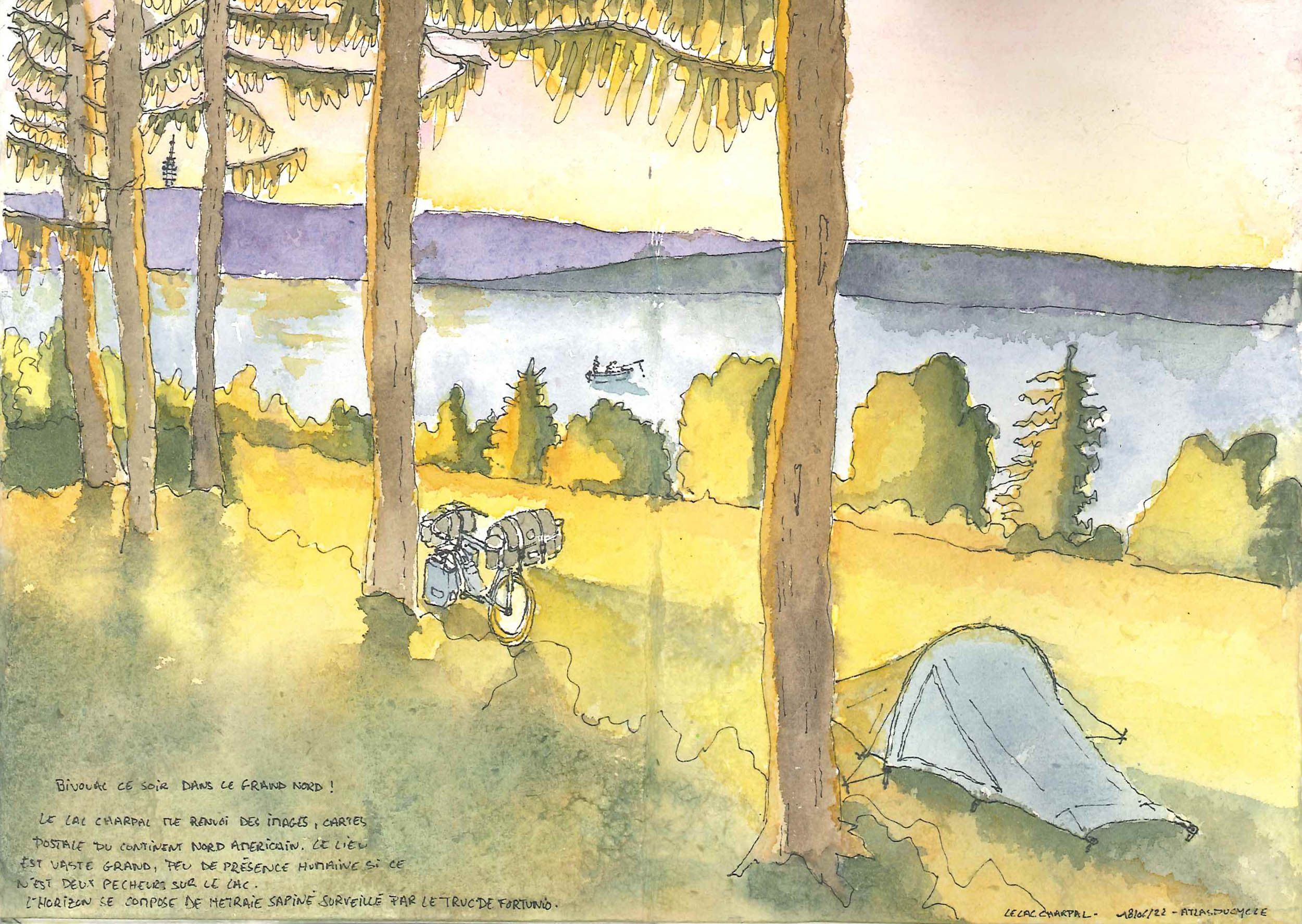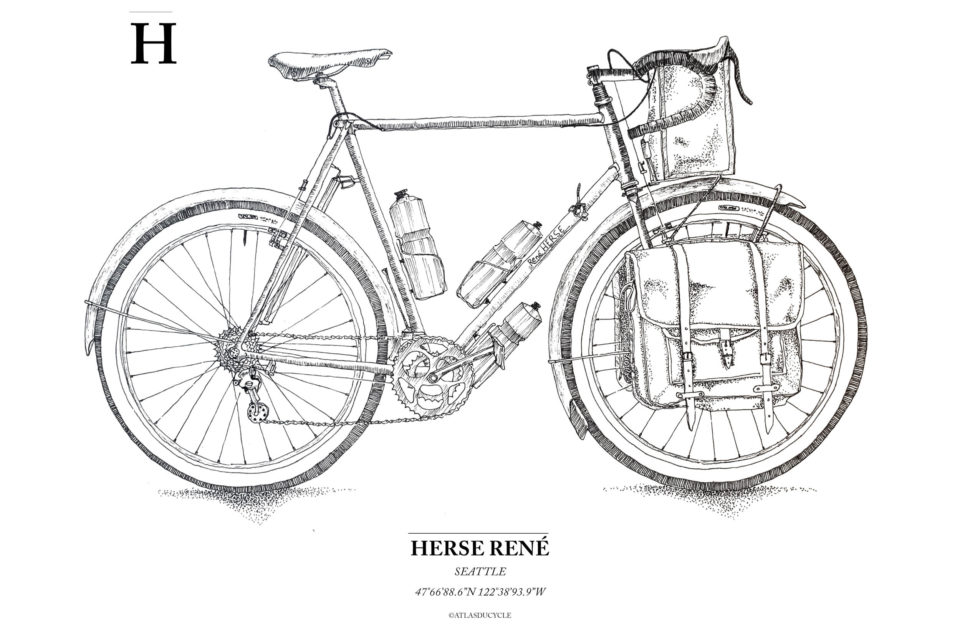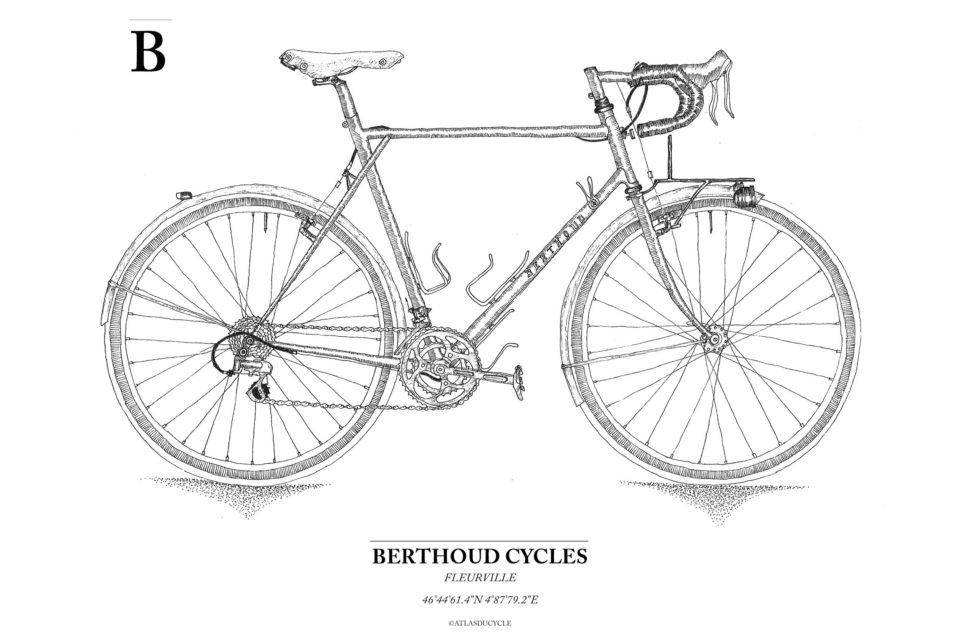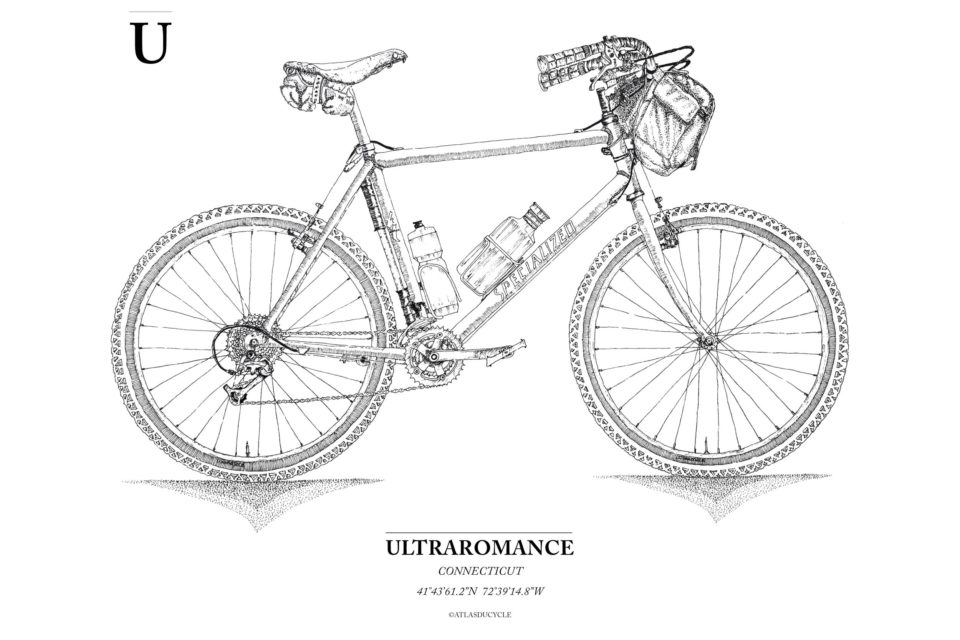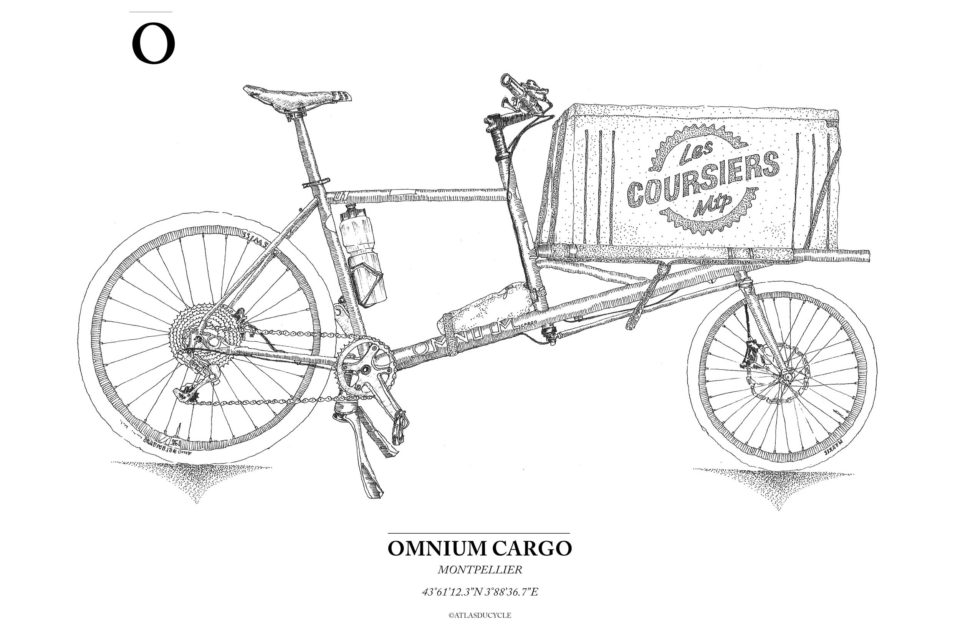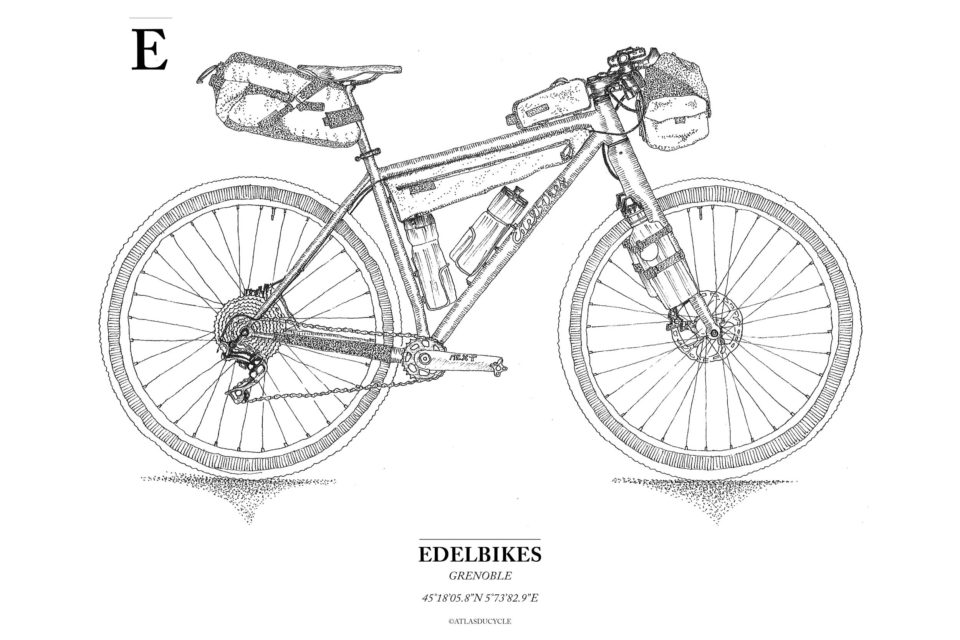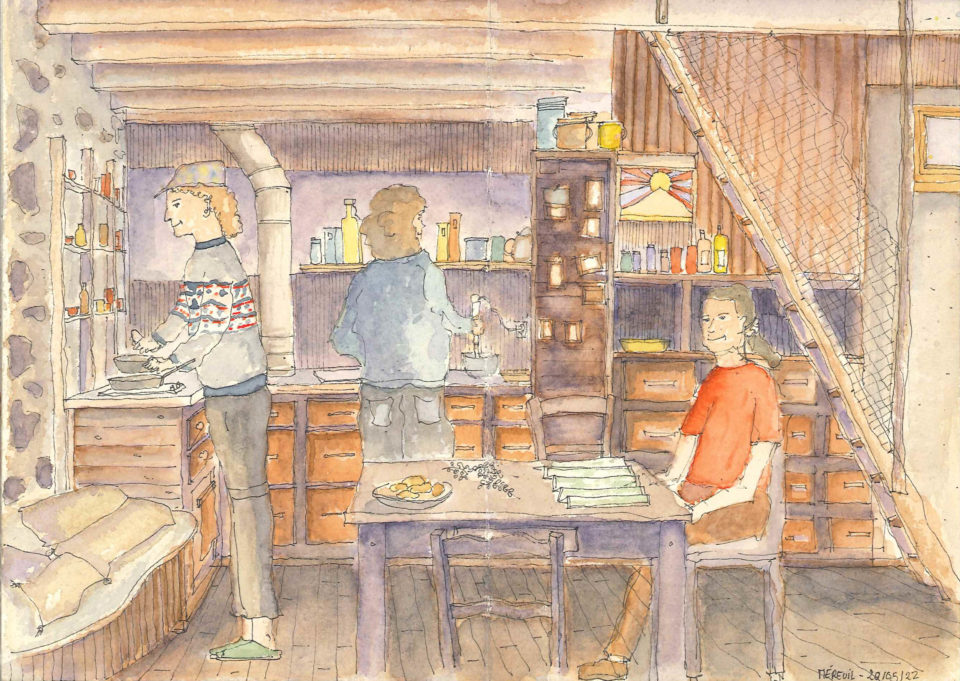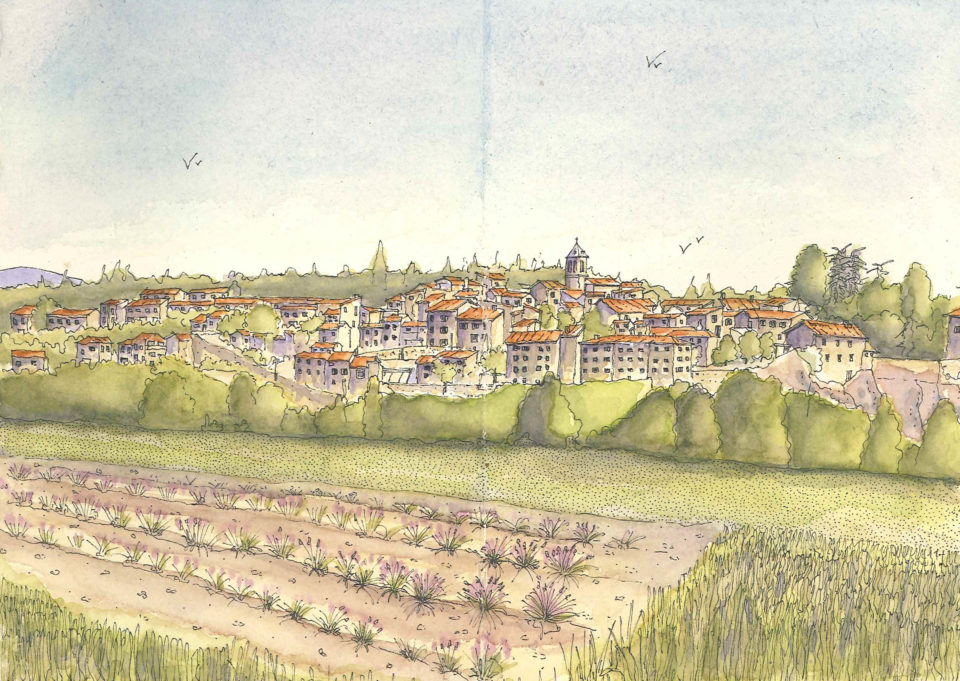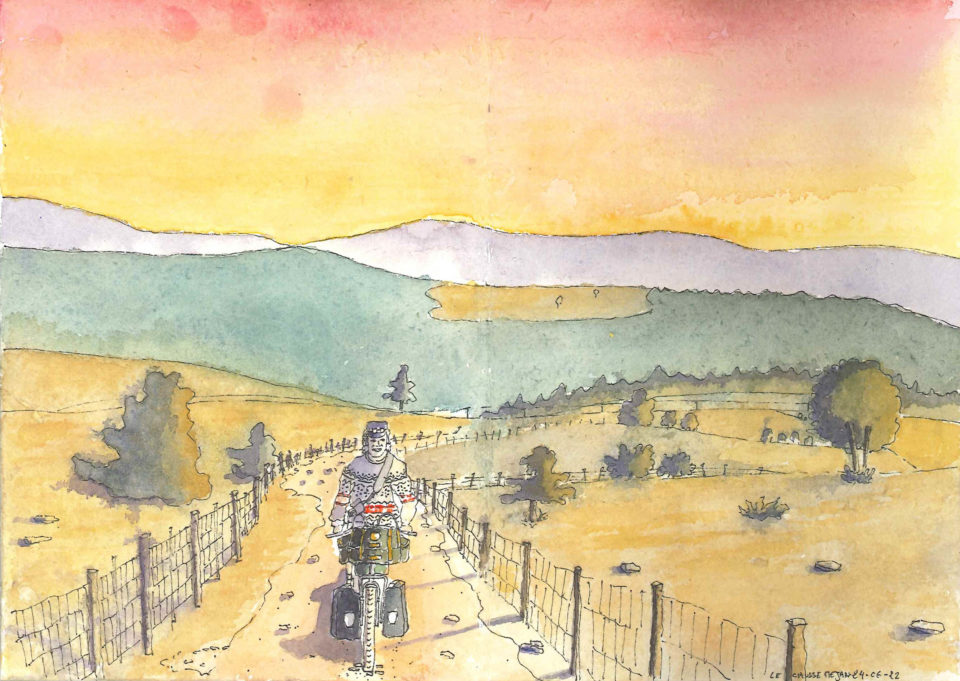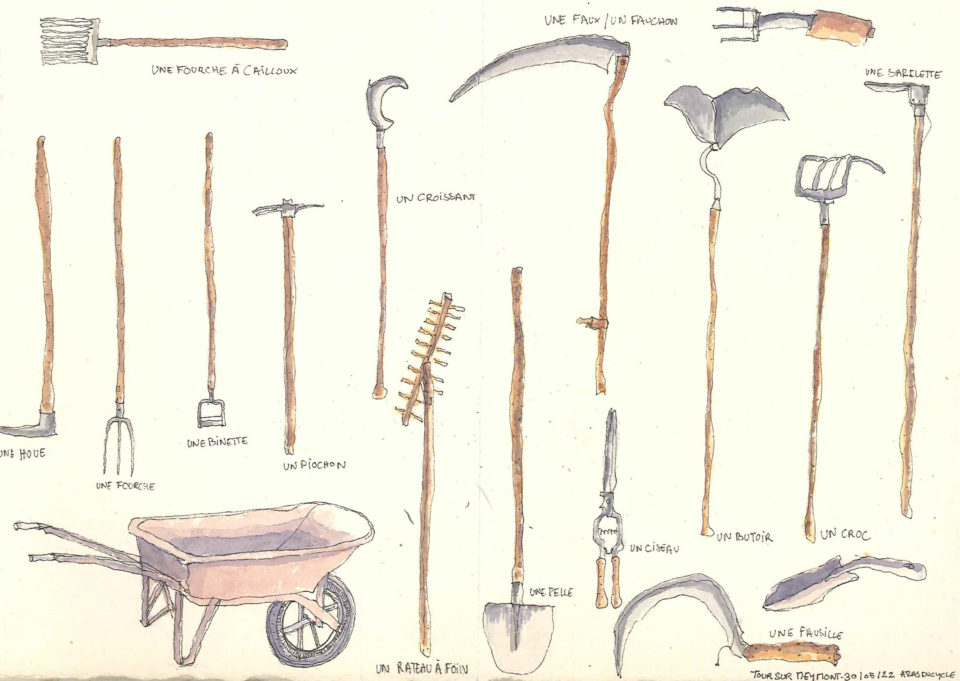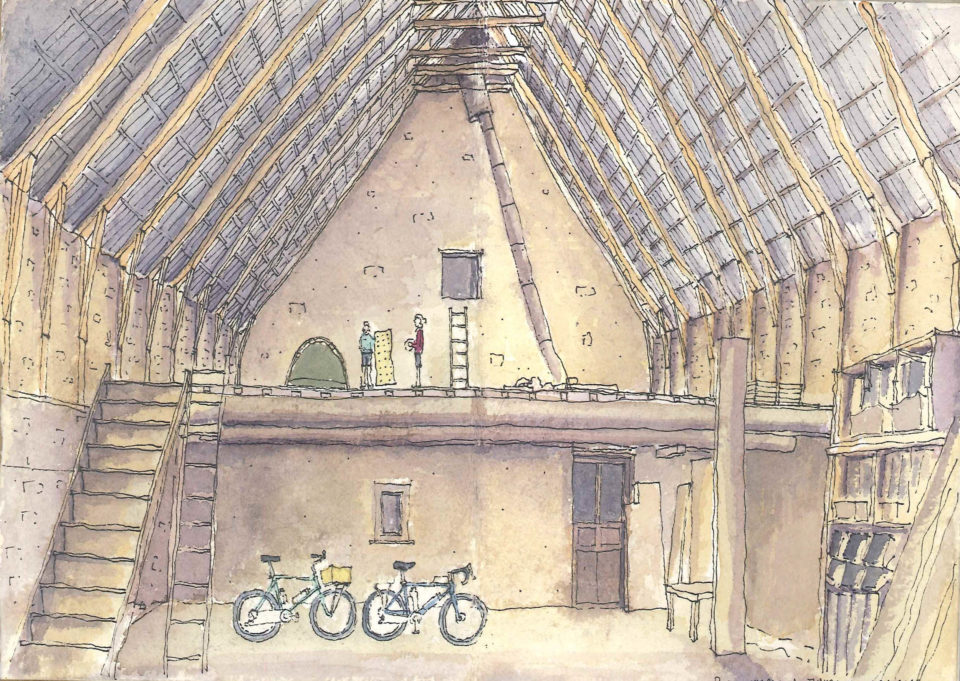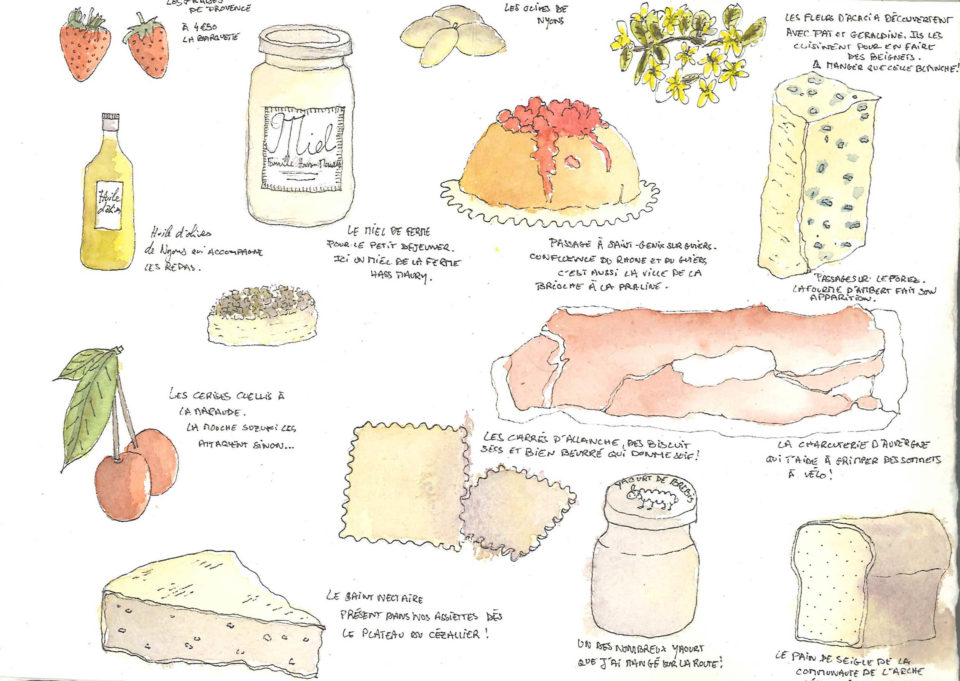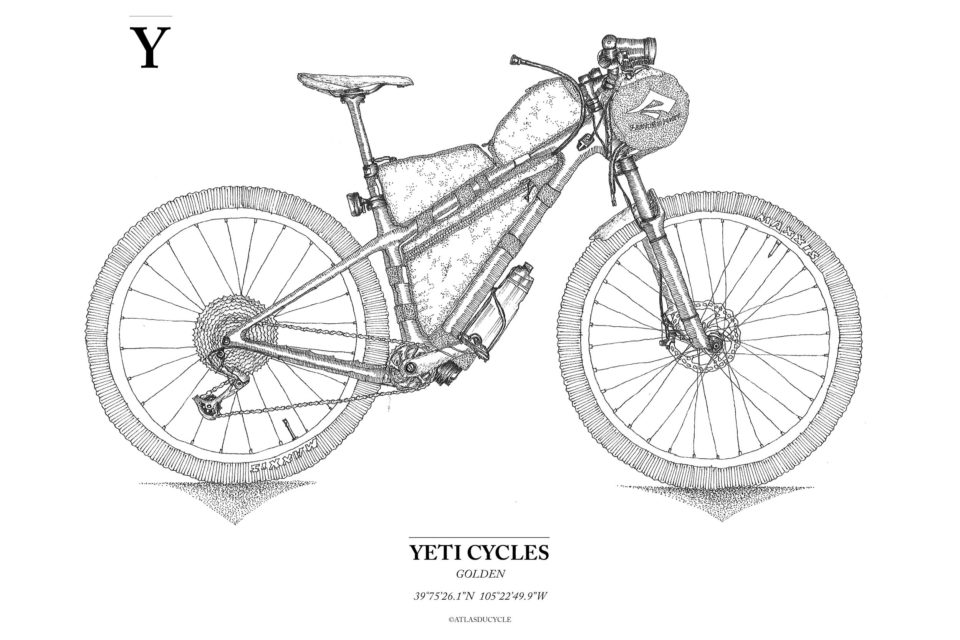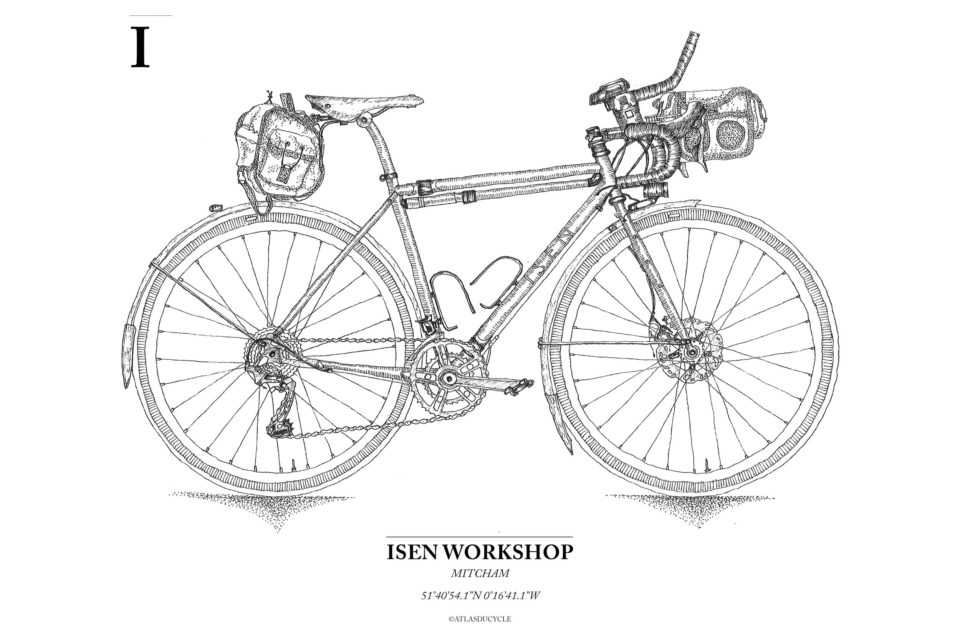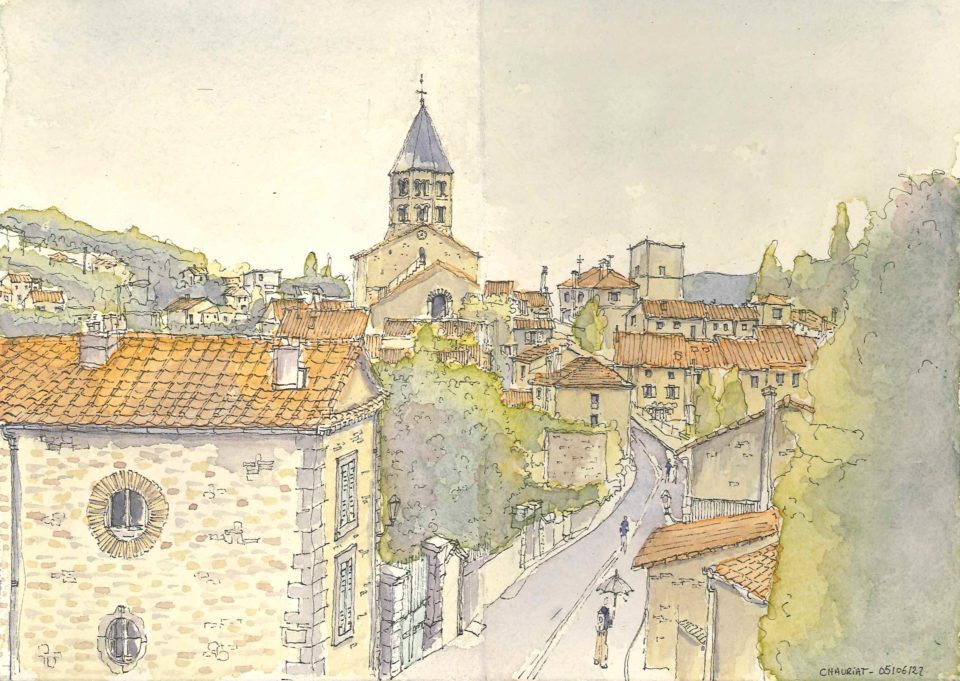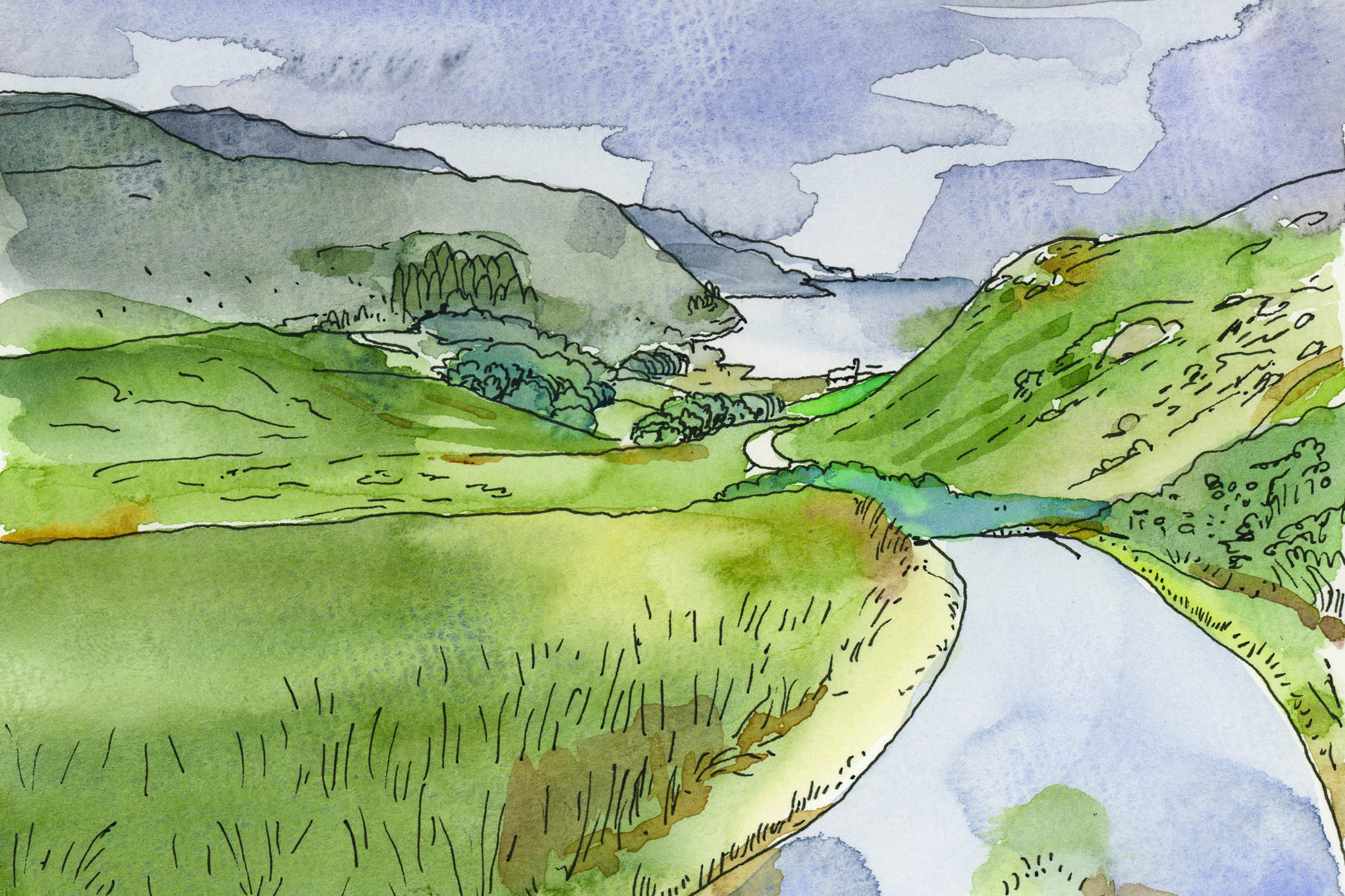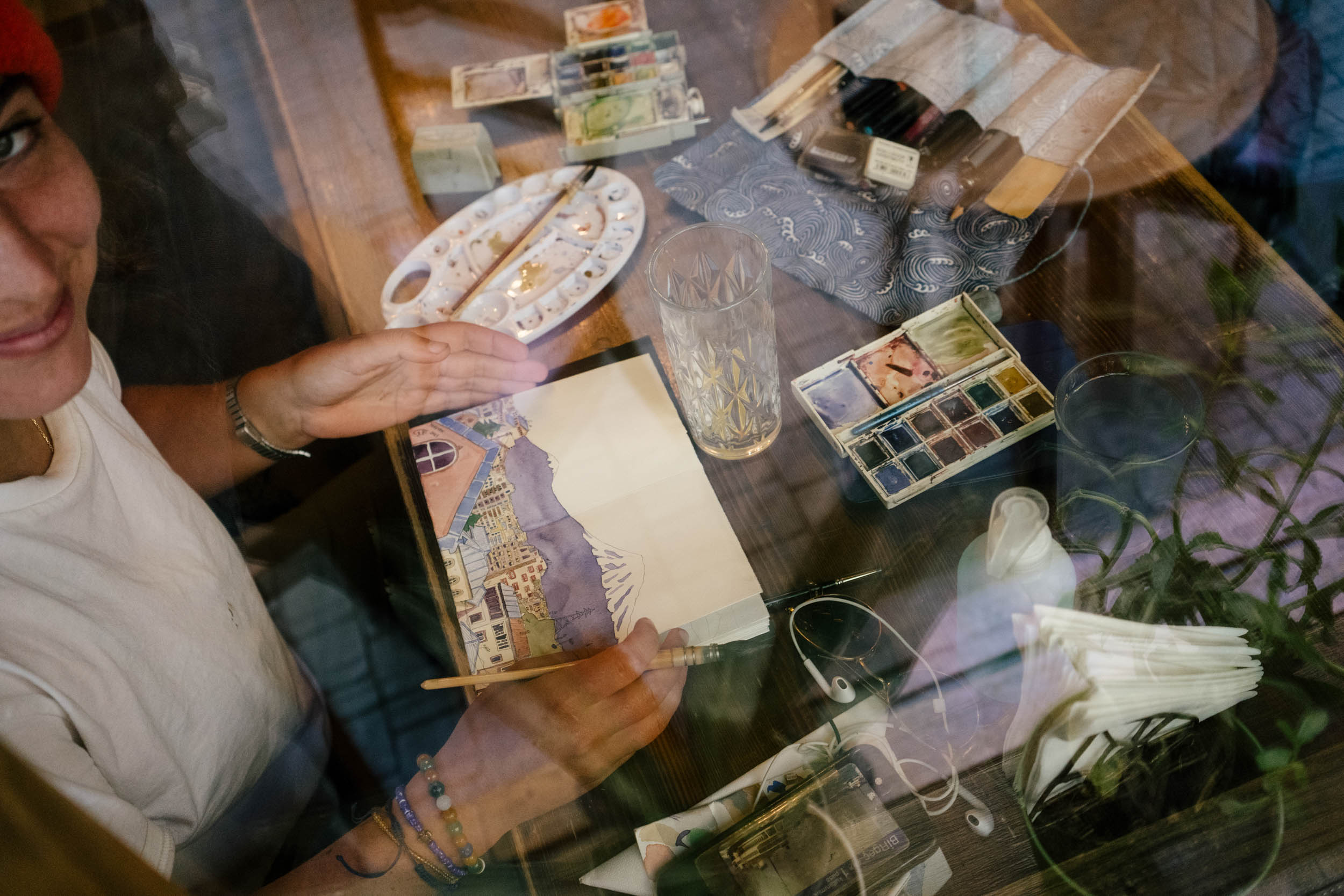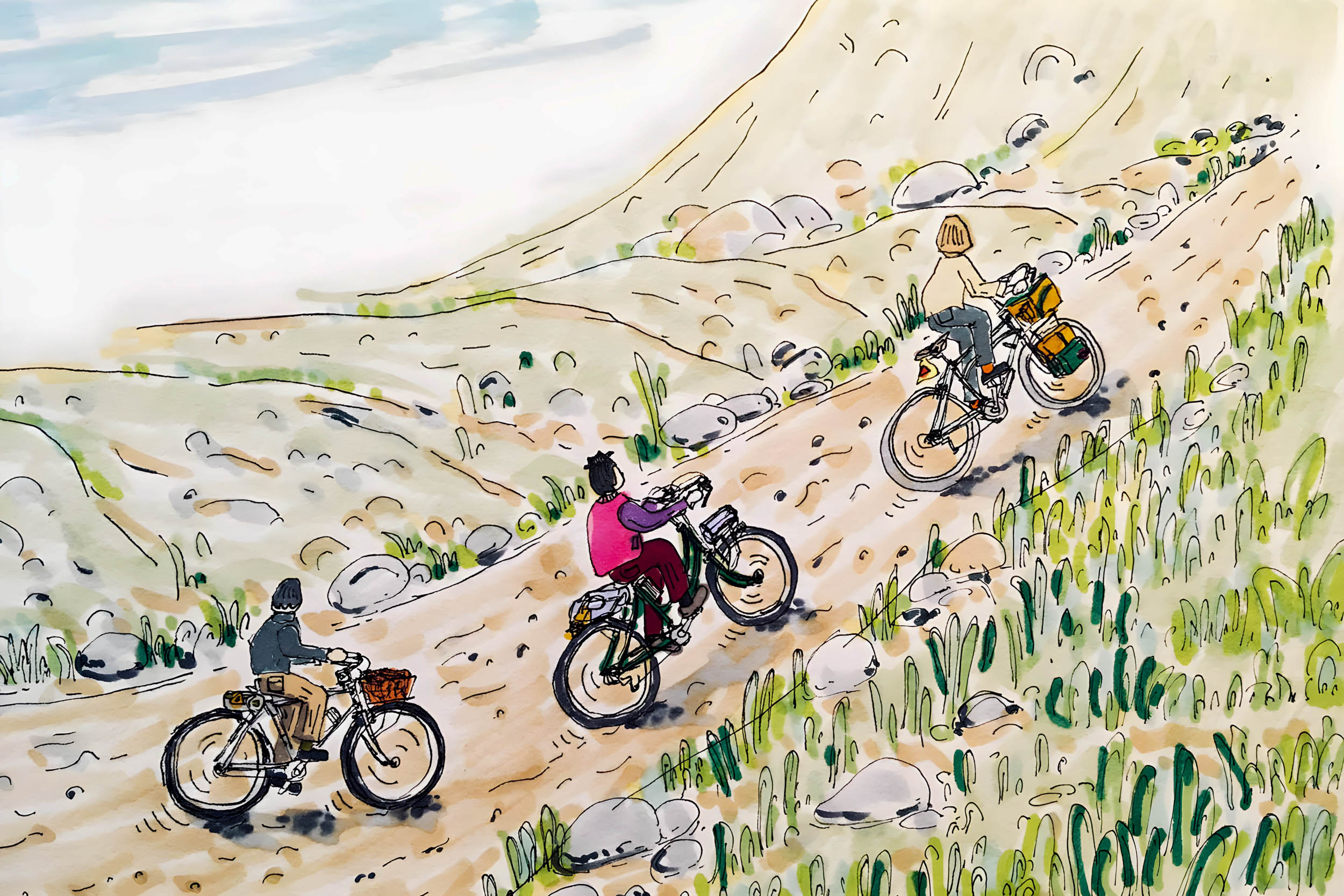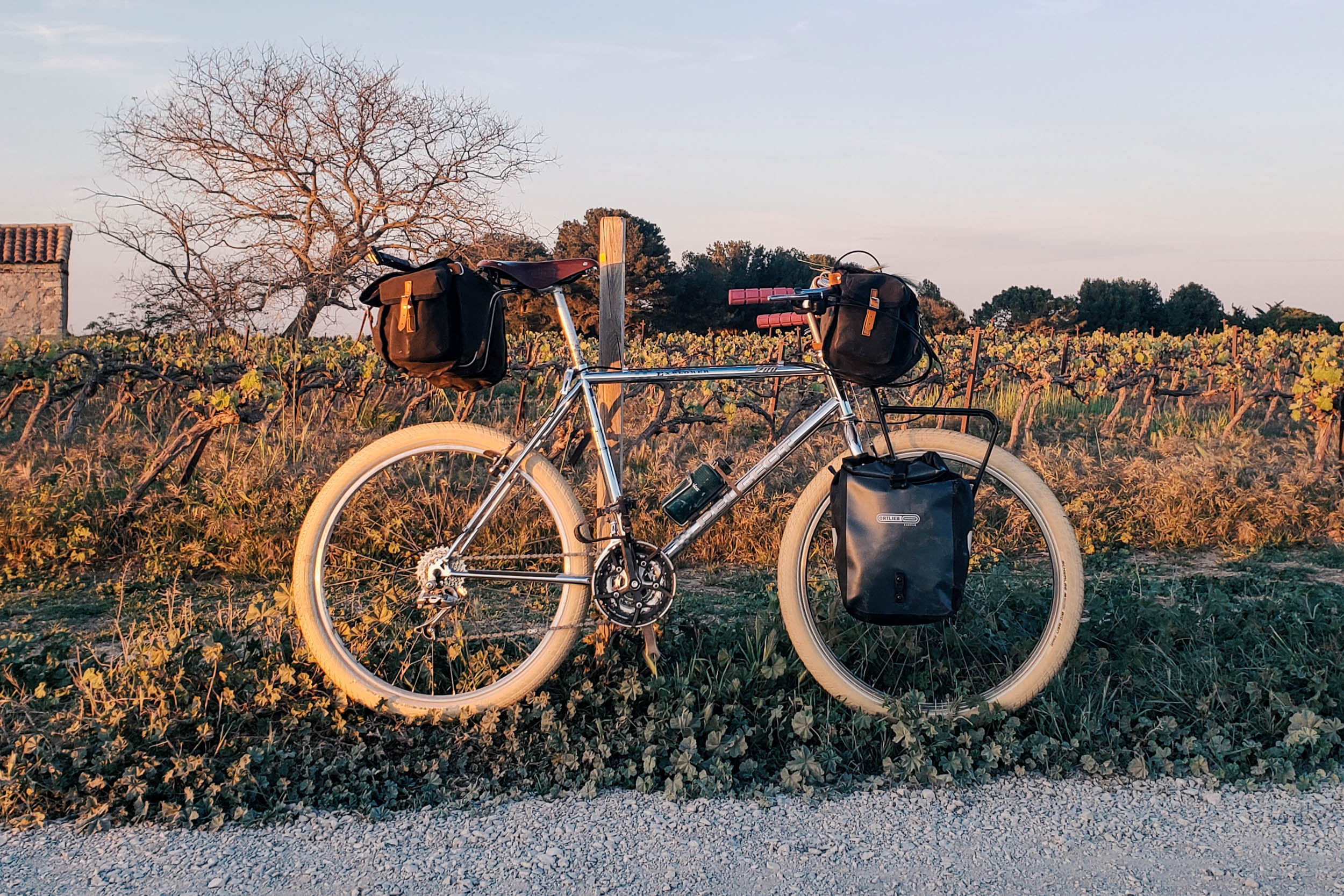Rider’s Lens: Timothe Girard’s Watercolors and Atlas du Cycle
Share This
In this Rider’s Lens, we get to know French illustrator Timothé Girard, who shares a mix of his incredibly detailed hand-drawn bicycles and vibrant watercolors made during a two-month bicycle tour around his home country. Learn more about Timothé and his work here…
Words and illustrations by Timothé Girard (@atlasducycle)
My name is Timothé, and I just recently blew out my 25 candles! I grew up in the mountains in a small village between Chambéry and Grenoble in the heart of France’s Chartreuse Massif with my parents and my two younger brothers.
When I was young, I spent a lot of time doing outdoor activities with my family. During winter, we often skied, and we spent the rest of the year hiking, camping, and picking chestnuts and mushrooms in the forest. It was also at this time that my mother introduced me to drawing. She is indeed the best ski resort drawer I’ve ever known! She taught me how to draw skiers, ski lifts, trees, and chalets. But I also liked copying the scenes with castles in the comics at home.

I wanted to continue my studies in drawing, so I left my mountains to study art and then architecture in Montpellier, and I’ll be finishing my degree very soon.
I moved to Montpellier to do my master’s degree in architecture one year ago. Since February, I’ve been working with my thesis supervisor on an illustrated booklet, and it’s thanks to this project that I started to make bike illustrations. The booklet is a primer on bicycle travel and was born from my experiences on a two-month trip around the Massif des Alpes and the Massif Central. It gathers anecdotes and sketches from my trip, literary references, and bike illustrations I made this year.
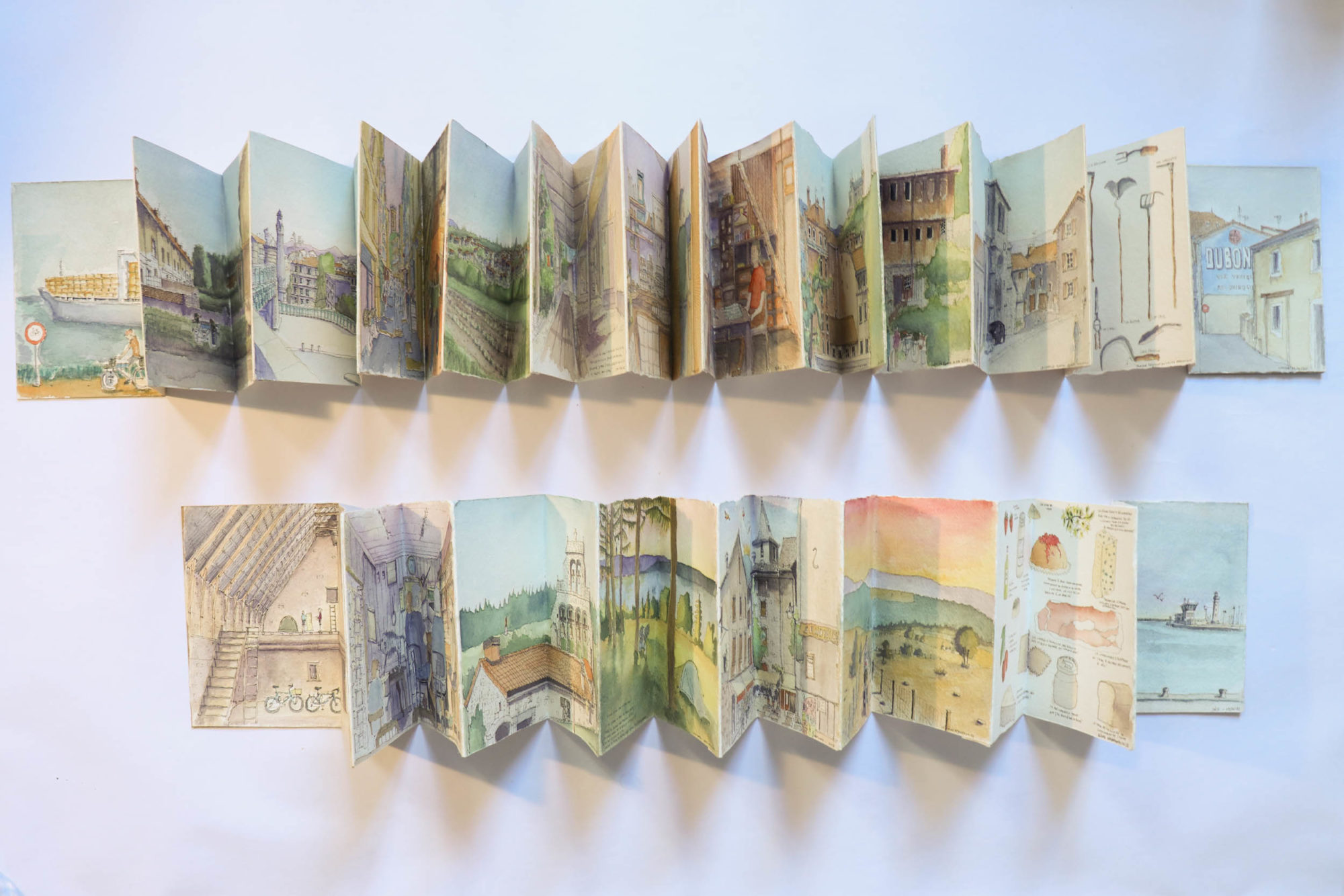
I started doing bicycle illustrations when I discovered Daniel Rebour’s hand drawings in a René Herse catalog. His work fascinates me, and it remains a real source of inspiration. My first drawing was Jan Heine’s Oregon Outback FKT bike, and I really loved the process of drawing it. As a result, I subsequently embarked on creating another 25 new bike illustrations.
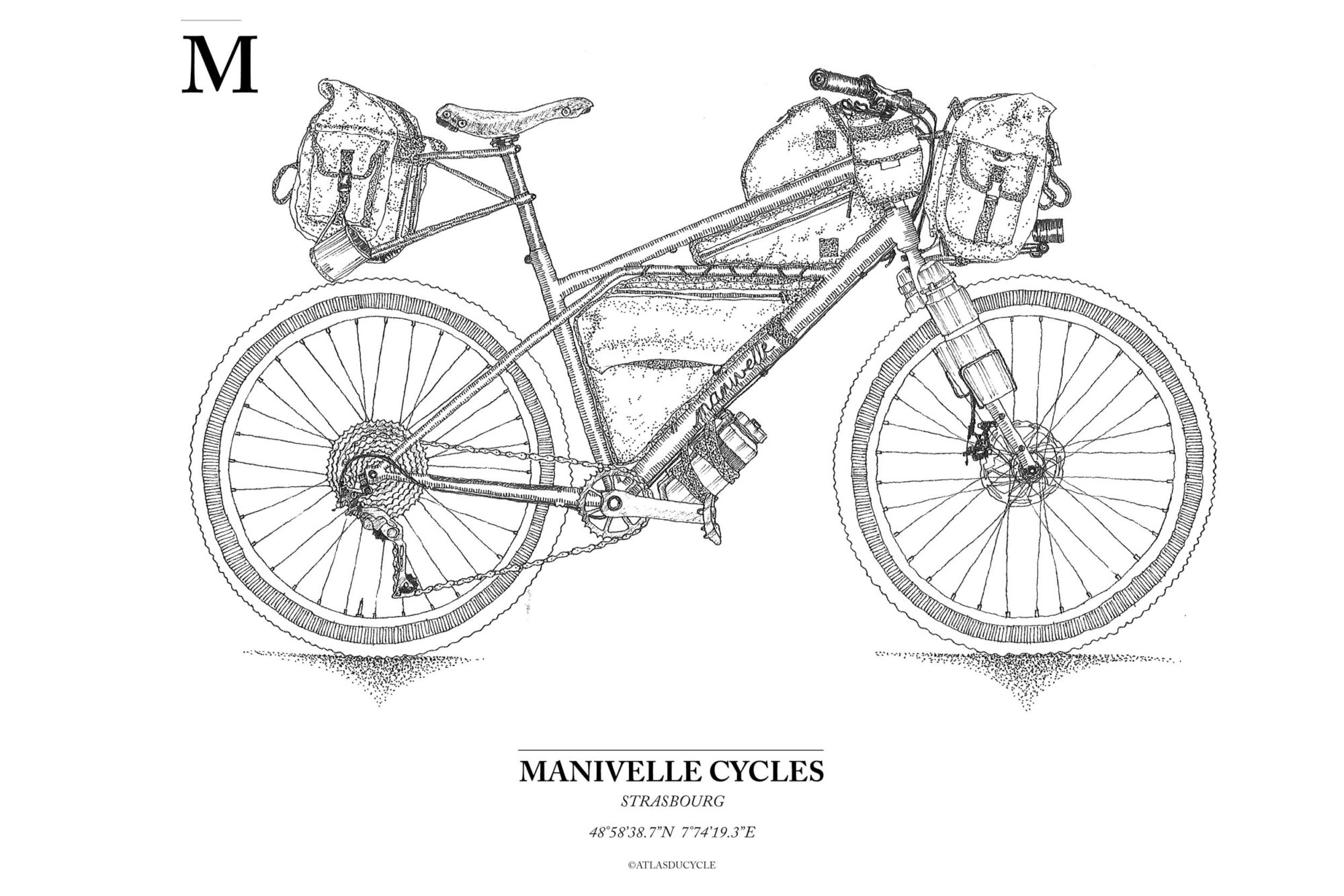
These drawings allowed me to meet people like Gabriel Refait, who restores bikes in Aix-en-Provence. They also allowed me to finance a part of my bicycle trip and to introduce people to artisans who work in the world of bikes.
I make the illustrations in several steps. First, I take the right proportions with my 0.5mm super pencil. Then, with a fine point pen, I draw the contours and work with the lines and the points to create the shadows and highlights of the bike.
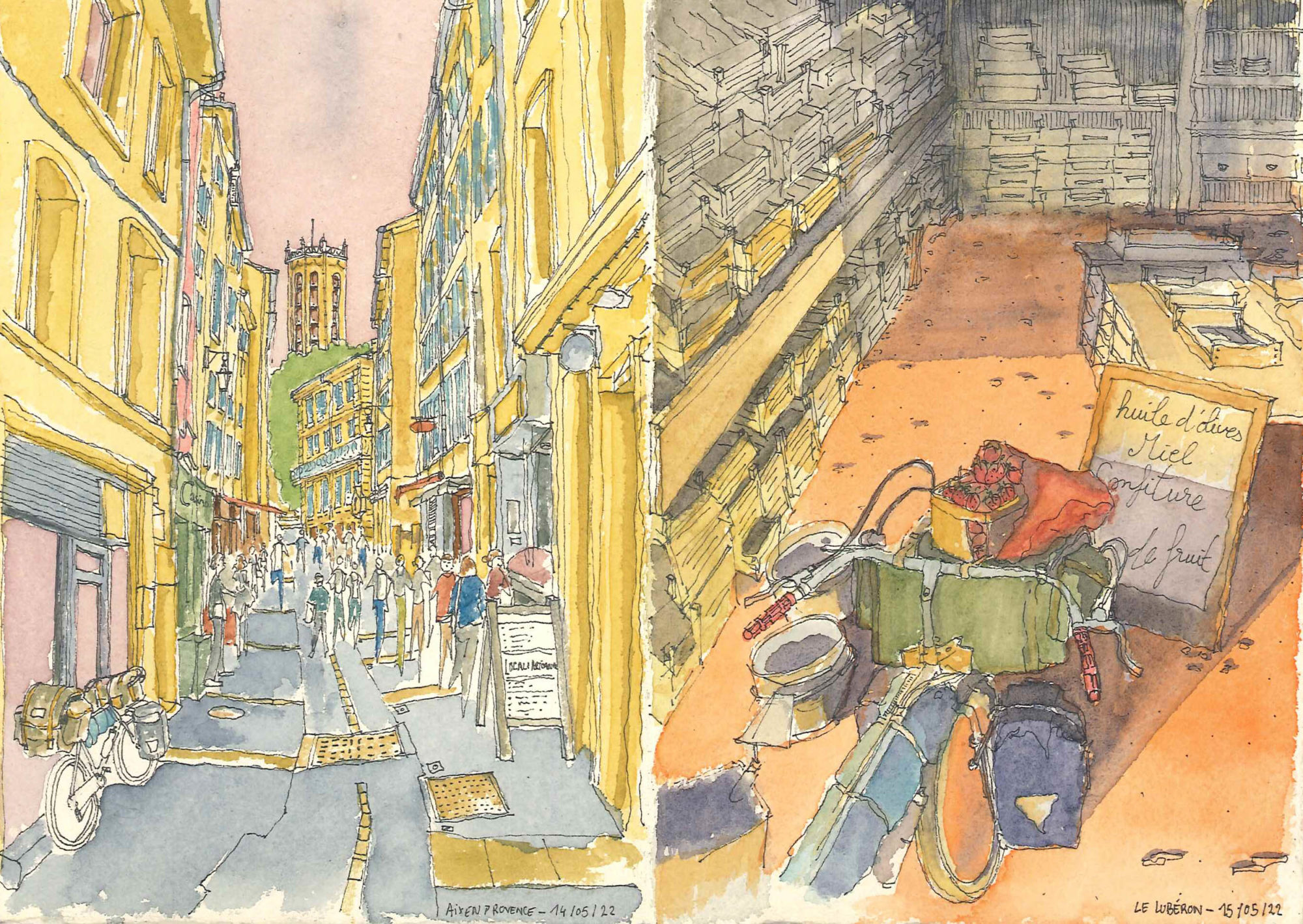
Watercolors
Drawing while traveling by bike allows you to suspend time, to live in the place and the present moment. Notebooks and bicycles are great tools to get in touch with the people you meet on the road, too. Telling the story of my travel experience through drawing has allowed me to put slowness back at the center of my itinerancy.
In this way, drawing while traveling translates into the luxury of taking time when we are in motion. I like very much this sentence of the traveling architect Bernard Gachet who says: “I draw to try to grasp the world around me, always failing to understand it. Travel and drawing are a means of knowledge, discovery, and respect. Drawing is a praise of slowness. Drawing means to stop and look, observe, transcribe, understand, reinterpret and communicate.”

Many of my drawings represent moments of pause in my journey. They represent scenes of contemplation with the landscape, architecture, difficult moments spent on the road, or convivial moments spent with the people who hosted me.
As with my illustrations, my travel watercolors are done in several stages. Most of the time, I decide on the bike where I will draw. I ride more slowly when a village, building, or landscape suddenly holds my attention. At first, I make my ink drawings (always with a fine point pen) on the spot. I also take advantage of this moment to eat or hydrate. It is also a moment of meditation and a feeling of freedom. It is later, in a café or in a comfortable place, that I take out my watercolor and apply the color.
Present and Future
In the manner of the great tours that young aristocrats did in the 18th century across Europe to complete their education, this bicycle trip was an opportunity to reflect on what I plan to do after my architectural studies. I would love to make drawings and illustrations for people who travel by bike once I’m done with school. I’ve also fallen deeply in love with bike travel, and I never miss an opportunity to go back and draw on the road!
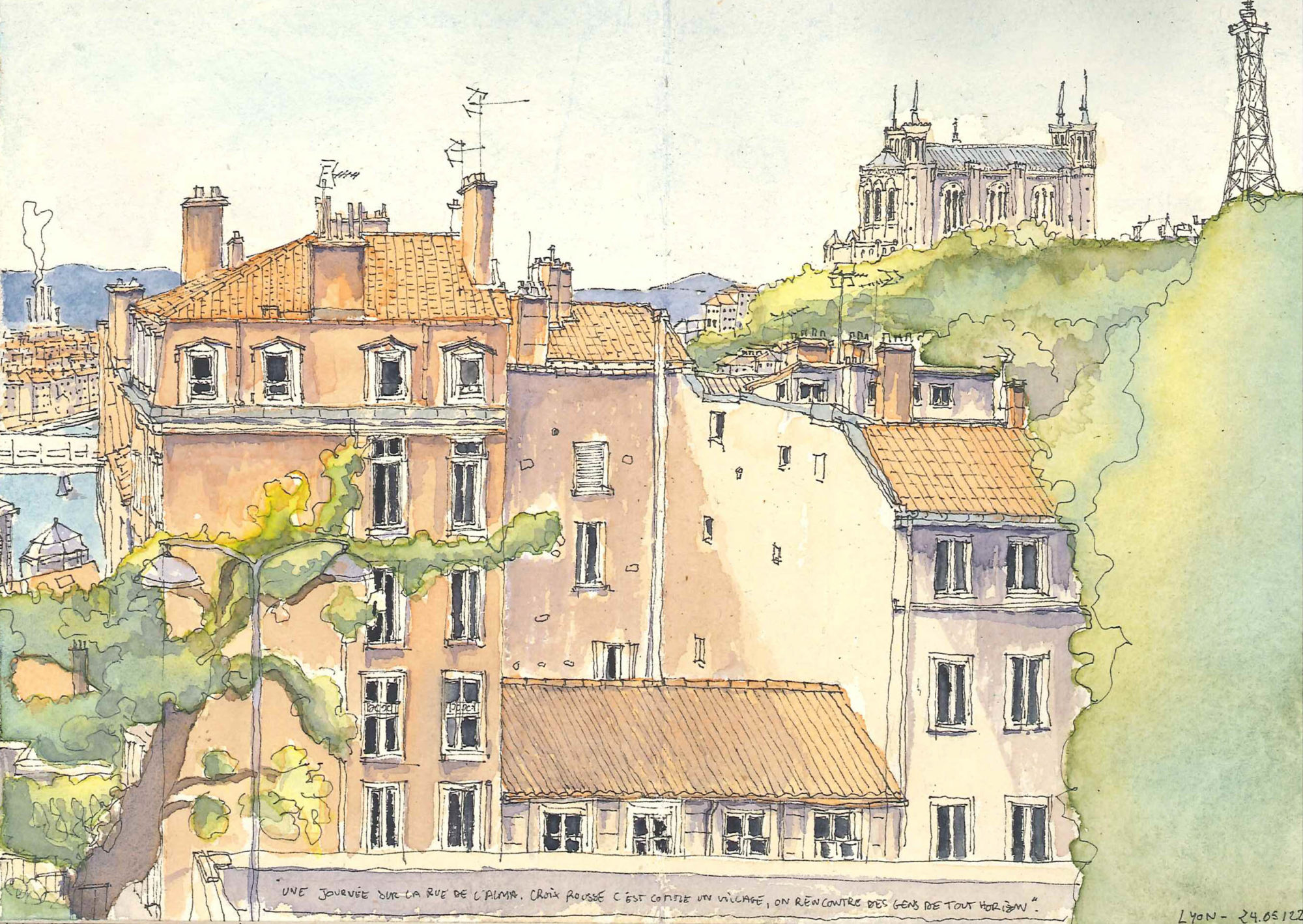
But, for the moment, I’m concentrating on putting together my bicycle travel primer, which will be available at the beginning of 2023. As mentioned above, it will be composed of written text with anecdotes of my trip, 26 drawn bikes, a map, and a sketchbook.
Timothe’s Illustration Gear
When I’m at home doing my bike illustrations, I usually use the same material I use for my architecture studies. I have been using it for several years to draw. It includes:
Drawing Supplies
- Drawing board
- Staedtler 0.1mm
- Staedtler Mars micro 0.5mm
- Staedtler Eraser
My two-month bike trip was the first time I carried my drawing materials while riding, and I didn’t know how to do it. I opted for freezer bags to protect my notebooks and painting materials from the rain, which I stored in the bottom of my waterproof bags. In the future, I would love to get a custom hip pack for easy access to my gear.
Watercolor Supplies
- Watercolor travel kit
- Staedtler pencil 0.1mm
- 2 watercolor brushes
- 2 handmade sketchbooks with Moulin-Richard-de-Bas paper
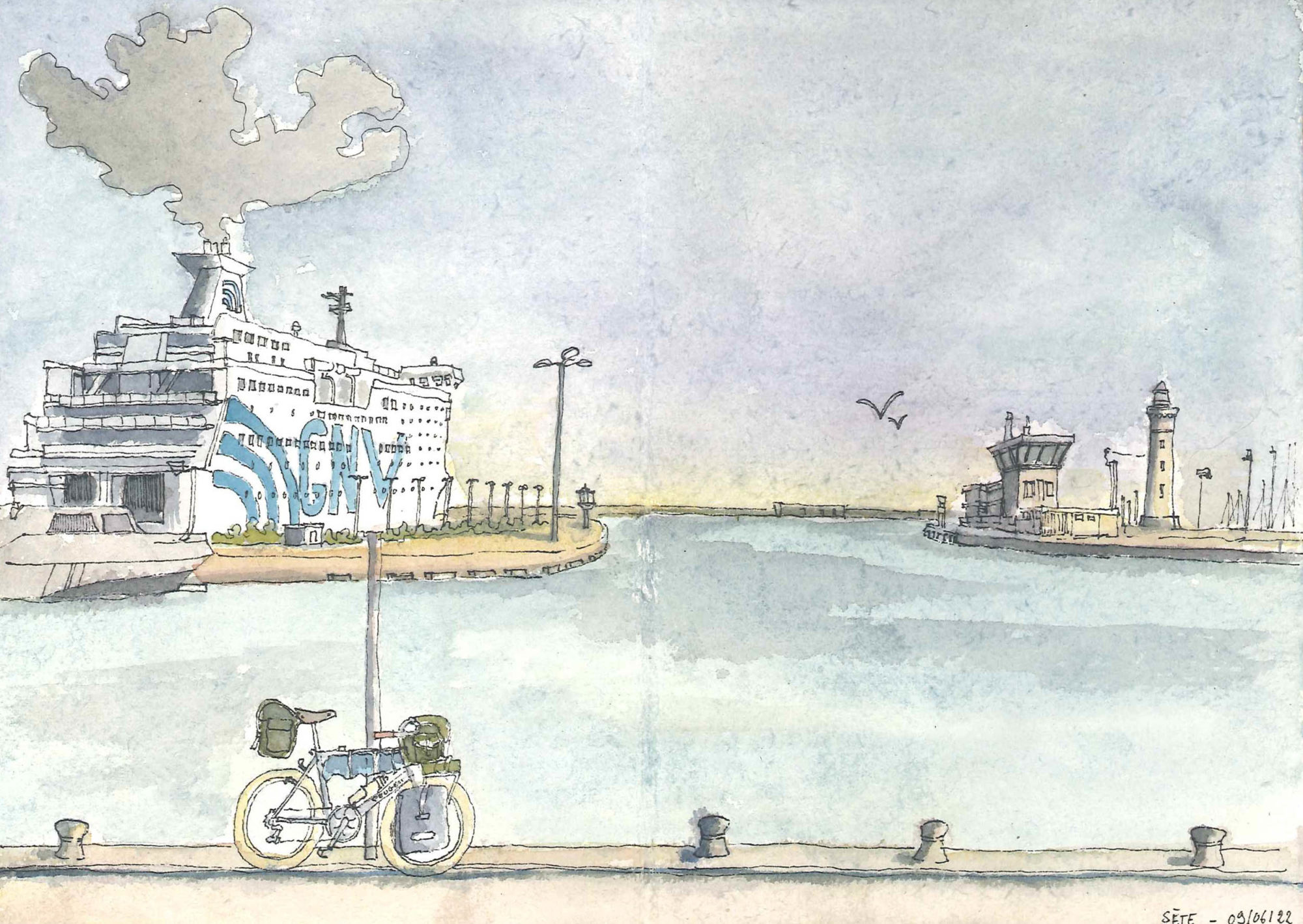
Acknowledgments
This project did not build itself, and I wanted to thank everyone who shared in the beginning of this adventure. First of all, I want to thank BIKEPACKING.com for sharing my travel bike as a Reader’s Rig a while back, and for the opportunity to create a poster to be included with the upcoming issue of The Bikepacking Journal. I also want to thank Jan Heine, who shared my first bike drawing in Bicycle Quarterly. Thank you also to Gabriel Refait of Dynamo Cycle Repairs (@dynamocyclerepairs) for sharing my travel logs. Lastly, I want to thank Isabel Del Real (@plouheran) for such an inspiring Rider’s Lens article and for the time she gave me to talk about drawing and travel. I hope something you read or see here will also make you want to draw when you take your bike on a trip!
Bikepacking Collective members, don’t miss the “15 Ways to go Bikepacking” fold-out poster that will be included with all copies of the upcoming ninth issue of The Bikepacking Journal. It features a bunch of fresh hand-drawn bikes from Timothé, and we can’t wait to share it with you.
Related Content
Make sure to dig into these related articles for more info...
Please keep the conversation civil, constructive, and inclusive, or your comment will be removed.






